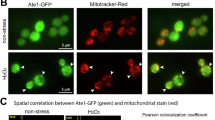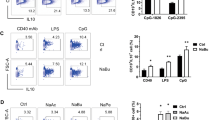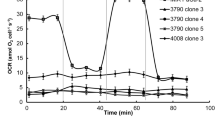Abstract
Aim:
To investigate the role of death-associated protein kinase (DAPK) on the apoptosis of Raji cells induced by sodium butyrate.
Methods:
The apoptosis of Raji cells were induced by sodium butyrate for 2, 4, 6, 8, and 10 d. Simultaneity, the Raji cells were inhibited to adhere on culture flask by polyHEME. Cell viability was detected by 3-(4, 5-dimethylthiazol-2-yl)-2, 5-diphenyltetrazolium bromide method and the cell apoptosis percentage was estimated by flow cytometry. DAPK and focal adhesion kinase (FAK) expression were measured by Western blotting. Coding sequence on the C-terminal of DAPK, which can suppress the function of DAPK, was tranfected into the Raji cells to investigate whether the C-terminal of DAPK could inhibit the apoptosis of Raji cells induced by sodium butyrate.
Results:
After being treated with sodium butyrate, the Raji cells expressed DAPK and displayed many protrusions to adhere onto the culture flask. The Raji cells were susceptive to apoptosis when they were inhibited adhesion by polyHEME. At that time, the cell viability decreased, the cell apoptosis percentage increased and the protein levels of total FAK were reduced. The Raji cells, which were transfected with the coding region on the C-terminal of DAPK, sustained apoptosis and the FAK protein level when treated with sodium butyrate.
Conclusion:
Sodium butyrate induced DAPK expression. It caused the Raji cells to display many protrusions all around the cells and adhere onto the culture flask. DAPK expression prompted apoptosis by reducing the FAK protein level in sodium butyrate-induced Raji cells.
Similar content being viewed by others
Log in or create a free account to read this content
Gain free access to this article, as well as selected content from this journal and more on nature.com
or
References
Blottiere HM, Buecher B, Galmiche JP, Cherbut C . Molecular analysis of the effect of short-chain fatty acids on intestinal cell proliferation. Proc Nutr Soc 2003; 62: 101–6.
Heerdt BG, Houston MA, Anthony GM, Augenlicht LH . Initiation of growth arrest and apoptosis of MCF-7 mammary carcinoma cells by tributyrin, a triglyceride analogue of the short-chain fatty acid butyrate, is associated with mitochondrial activity. Cancer Res 1999; 59: 1584–91.
Benjamin D, Jost JP . Reversal of methylation-mediated repression with short-chain fatty acids: evidence for an additional mechanism to histone deacetylation. Nucleic Acids Res 2001; 29: 3603–10.
Lee MG, Wynder C, Bochar DA, Hakimi MA, Cooch N, Shiekhattar R . Functional interplay between histone demethylase and deacetylase enzymes. Mol Cell Biol 2006; 26: 6395–402.
Duan H, Heckman CA, Boxer LM . Histone deacetylase inhibitors down-regulate bcl-2 expression and induce apoptosis in t (14;18) lymphomas. Mol Cell Biol 2005; 25: 1608–19.
Earel, JK, VanOosten, RL, Griffith TS . Histone deacetylase inhibitors modulate the sensitivity of tumor necrosis factor- related apoptosis-inducing ligand-resistant bladder tumor cells. Cancer Res 2006; 66: 499–507.
Kissil JL, Feinstein E, Cohen O, Jones PA, Tsai YC, Knowles MA, et al. DAP kinase loss of expression in various carcinoma and B-cell lymphoma cell lines: possible implications for role as tumor suppressor gene. Oncogene 1997; 15: 403–7.
Zhang HT, Feng ZL, Liang NC, Zhu ZY, Ma JQ . Sodium butyrate induces Raji cells to express DAPK. Chin Pharmacol Bull 2005; 21: 1438–41.
Follanan J, Moscona A . Role of cell shape in growth control. Nature 1978; 273: 345–9.
Zhang HT, Wu J, Zhang HF, Zhu QF . Efflux of potassium ion is an important reason of HL-60 cells apoptosis induced by tachyplesin. Acta Pharmacol Sin 2006; 27: 1367–74.
Watabe M, Hishikawa K, Takayanagi A, Shimizu N, Nakaki T . Caffeic acid phenethyl ester induces apoptosis by inhibition of NFκB and activation of Fas in human breast cancer MCF-7 cells. J Biol Chem 2004; 279: 6017–26.
Zhang HT, Zhu ZY, Feng ZL, Li XY, Li MY, Ma JQ, et al. Effect of DAPK1 gene transfection on high-metastasis, non-small lung cancer cell PGCl3. Ai Zheng 2004; 23: 497–501.
Zhang HT, Zhu ZY, Ji QM, Li XY, Li MY, Ma JQ . Cloning and sequence analysis of death associated protein kinase gene ORF and DAPK1 inducing Raji cell apoptosis. Chin Pathol Physiol J 2004; 20: 88–93. Chinese.
Zhang HT, Feng ZL, Zhu ZY, Ma JQ, Liang NC . Effect on TNF-α inhibit human embryonic lung fibroblast proliferation by death associated protein kinase carboxylic terminal peptide. Basic Clin Med 2006; 26: 975–9. Chinese.
Zhang X, Yashiro M, Ren J, Hirakawa K . Histone deacetylase inhibitor, trichostatin A, increases the chemosensitivity of anti-cancer drugs in gastric cancer cell lines. Oncol Rep 2006; 16: 563–8.
Inbal B, Cohen O, Polak-Charcon S, Kopolovic J, Vadai E, Eisenbach L, et al. DAP kinase links the control of apoptosis to metastasis. Nature 1997; 390: 180–4.
Cohen O, Feinstein E, Kimchi A . DAP-kinase is a Ca2+/calmodulin-dependent, cytoskeletal-associated protein kinase, with cell death-inducing functions that depend on its catalytic activity. EMBO J 1997; 16: 998–1008.
Bialik S, Bresnick AR, Kimchi A . DAP-kinase-mediated morphological changes are localization dependent and involve myosin-II phosphorylation. Cell Death Differ 2004; 11: 631–44.
Kuo JC, Wang WJ, Yao CC, Wu PR, Chen RH . The tumor suppressor DAPK inhibits cell motility by blocking the integrin-mediated polarity pathway. J Cell Biol 2006; 172: 619–31.
Raveh T, Berissi H, Eisenstein M, Spivak T, Kimchi A . A functional genetic screen identifies regions at the C-terminal tail and death-domain of death-associated protein kinase that are critical for its proapoptotic activity. Proc Natl Acad Sci USA 2000; 97: 1572–7.
Kozak M . The scanning model for translation: an update. J Cell Biol 1989; 108: 229–41.
Lebakken CS, Rapraeger AC . Syndecan-1 mediates cell spreading in transfected human lymphoblastoid (Raji) cells. J Cell Biol 1996; 132: 1209–21.
Xia H, Nho RS, Kahm J, Kleidon J, Henke CA . Focal adhesion kinase is upstream of phosphatidylinositol 3-kinase/akt in regulating fibroblast survival in response to contraction of type i collagen matrices via a (beta) 1 integrin viability signaling pathway. J Biol Chem 2004; 279: 33024–34.
Wang WJ, Kuo JC, Yao CC, Chen RH . DAP-kinase induces apoptosis by suppressing integrin activity and disrupting matrix survival signals. J Cell Biol 2002; 159: 169–79.
Wen LP, Fahrni JA, Troie S, Guan JL, Orth K, Rosen GD . Cleavage of focal adhesion kinase by caspases during apoptosis. J Biol Chem 1997; 272: 26056–61.
Kurenova E, Xu LH, Yang X, Baldwin AS, Craven RJ, Hanks SK, et al. Focal adhesion kinase suppresses apoptosis by binding to the death domain of receptor-interacting protein. Mol Cell Biol 2004; 24: 4361–71.
Author information
Authors and Affiliations
Corresponding authors
Additional information
Project supported by the Scientific Research Foundation for the Returned Overseas Chinese Scholars, State Education Ministry. (No 2000-479) and the Key Subject Foundation of Guangdong Province (No 9906).
Rights and permissions
About this article
Cite this article
Zhang, Ht., Feng, Zl., Wu, J. et al. Sodium butyrate-induced death-associated protein kinase expression promote Raji cell morphological change and apoptosis by reducing FAK protein levels. Acta Pharmacol Sin 28, 1783–1790 (2007). https://doi.org/10.1111/j.1745-7254.2007.00660.x
Received:
Accepted:
Issue date:
DOI: https://doi.org/10.1111/j.1745-7254.2007.00660.x
Keywords
This article is cited by
-
Evaluating DAPK as a therapeutic target
Apoptosis (2014)
-
Gene signature critical to cancer phenotype as a paradigm for anticancer drug discovery
Oncogene (2013)
-
Trichostatin A sensitizes cisplatin-resistant A549 cells to apoptosis by up-regulating death-associated protein kinase
Acta Pharmacologica Sinica (2010)



